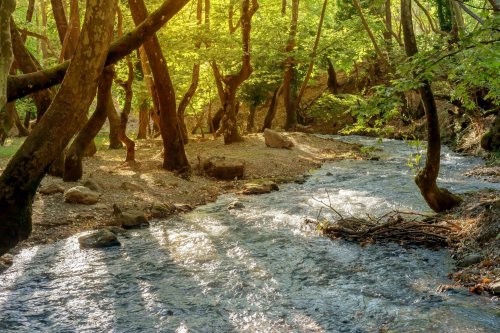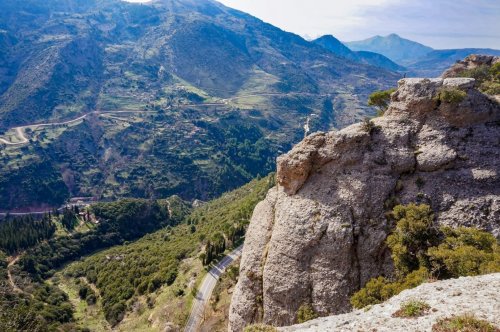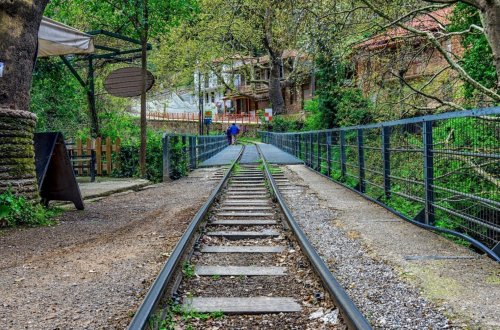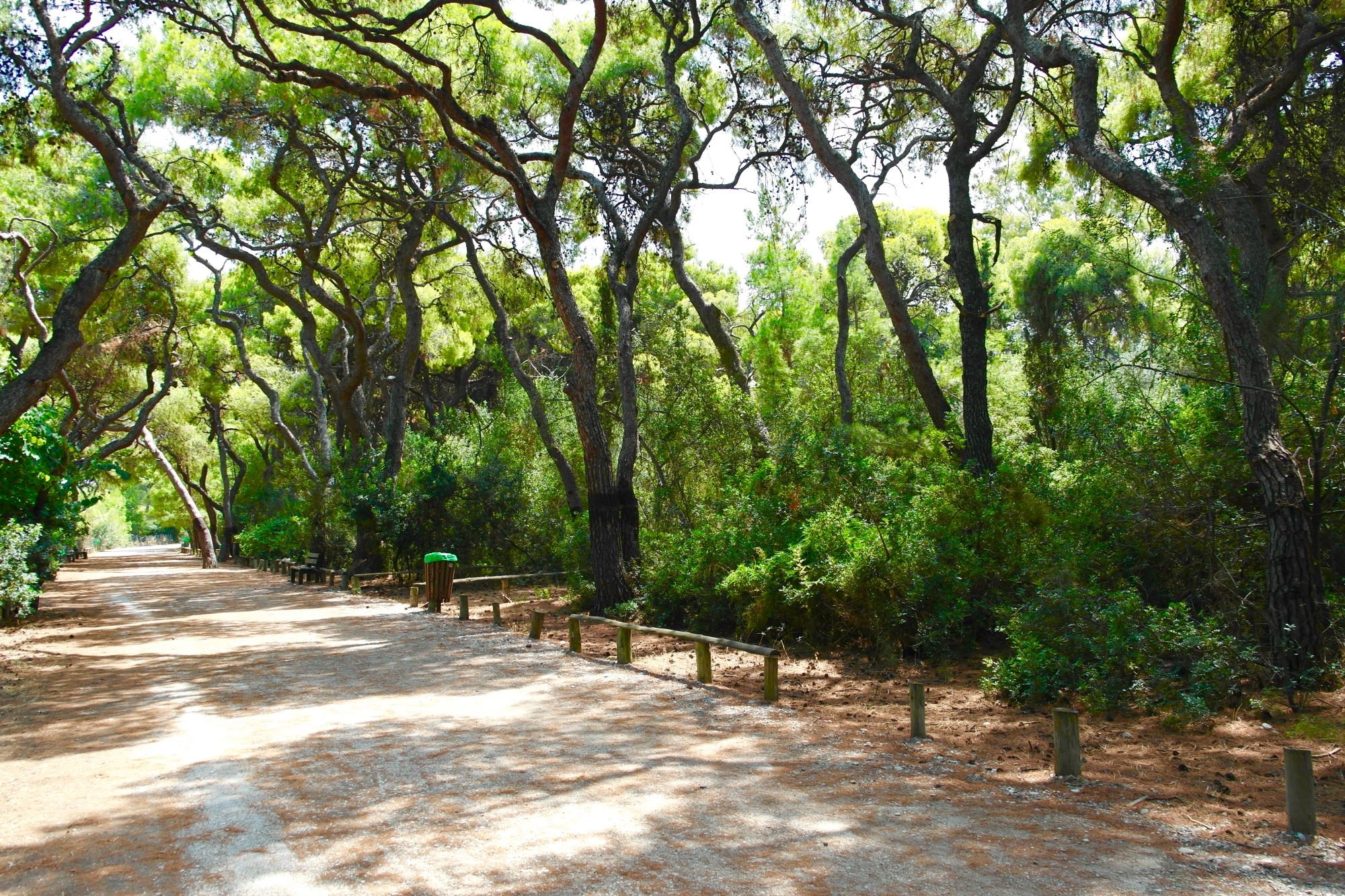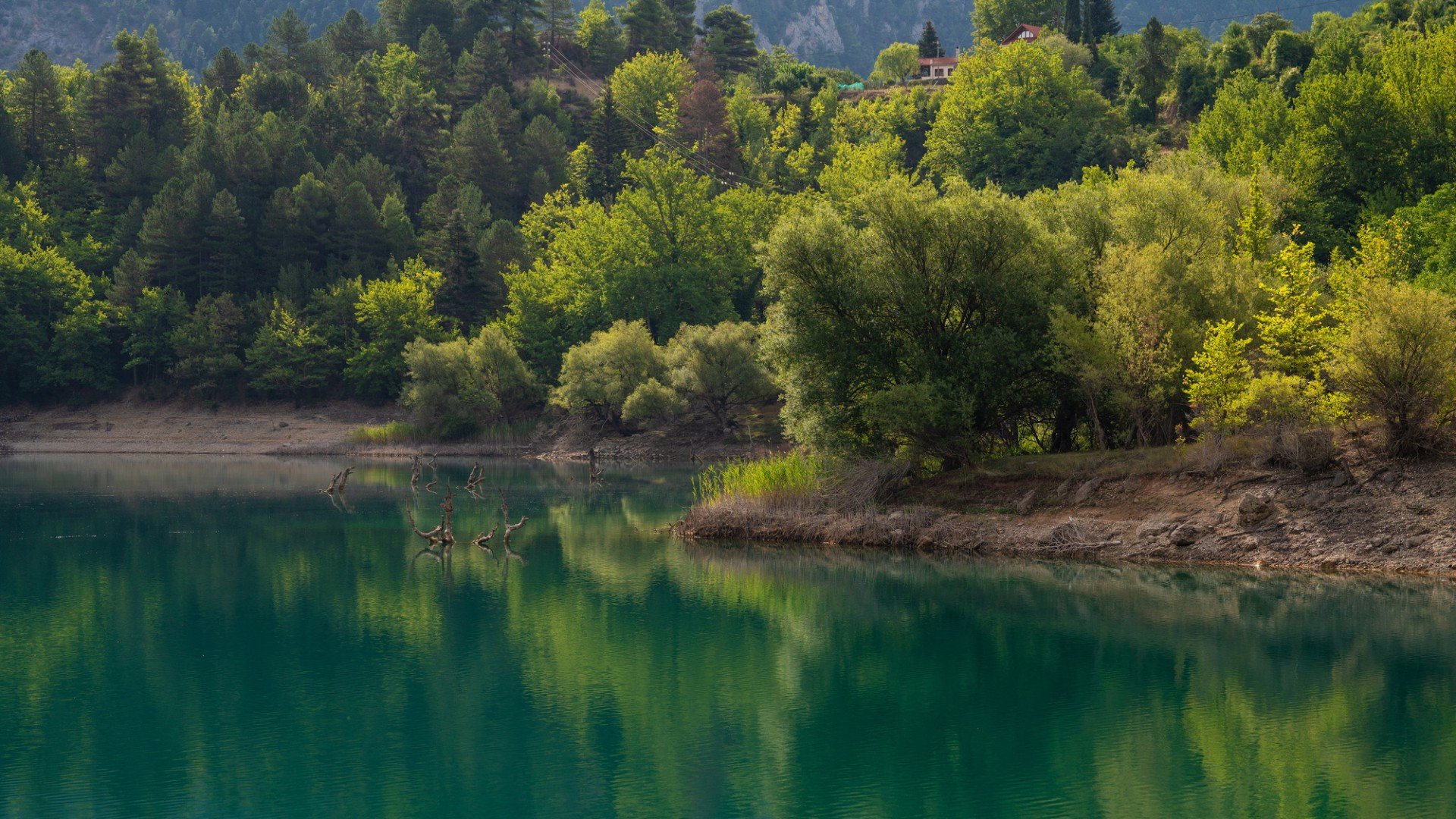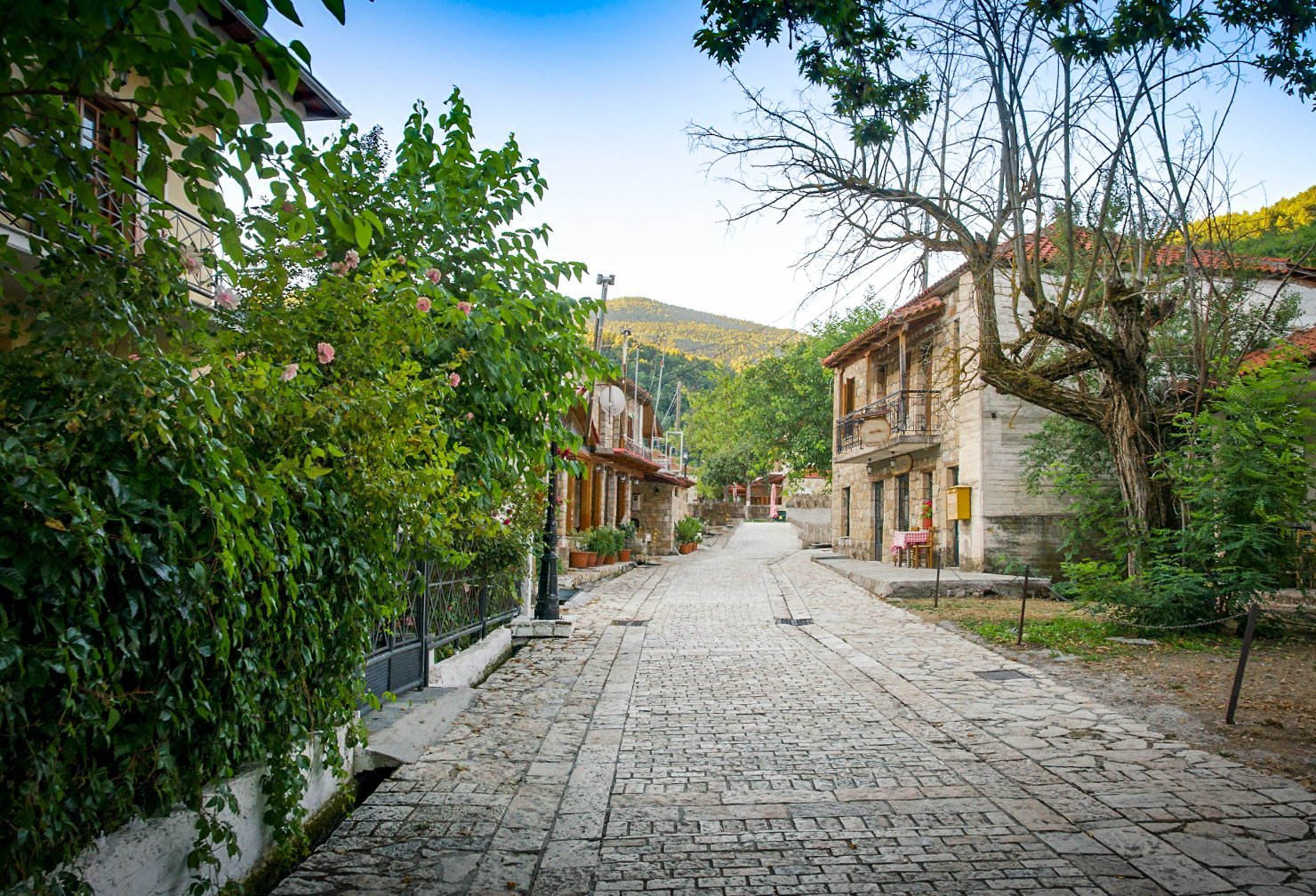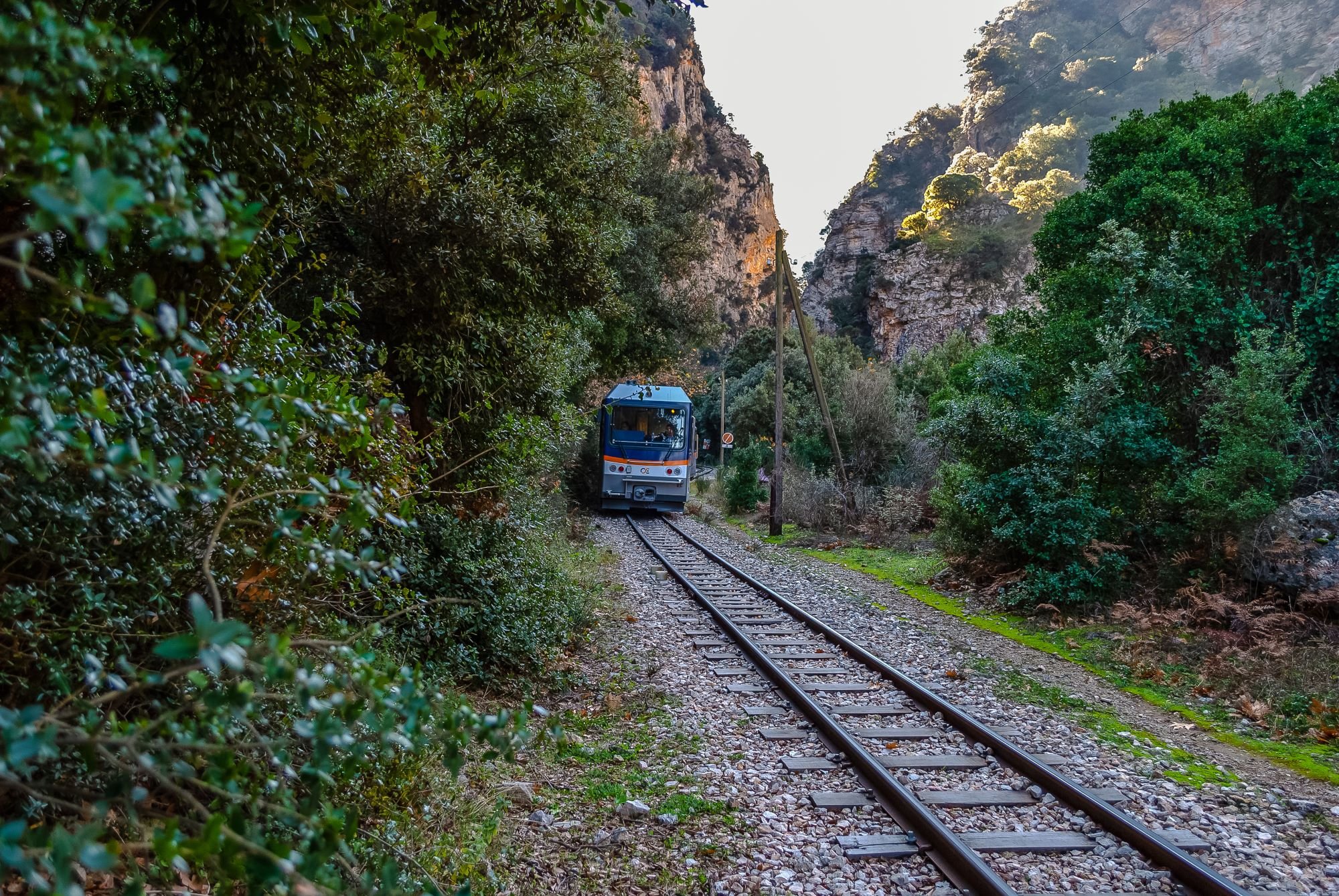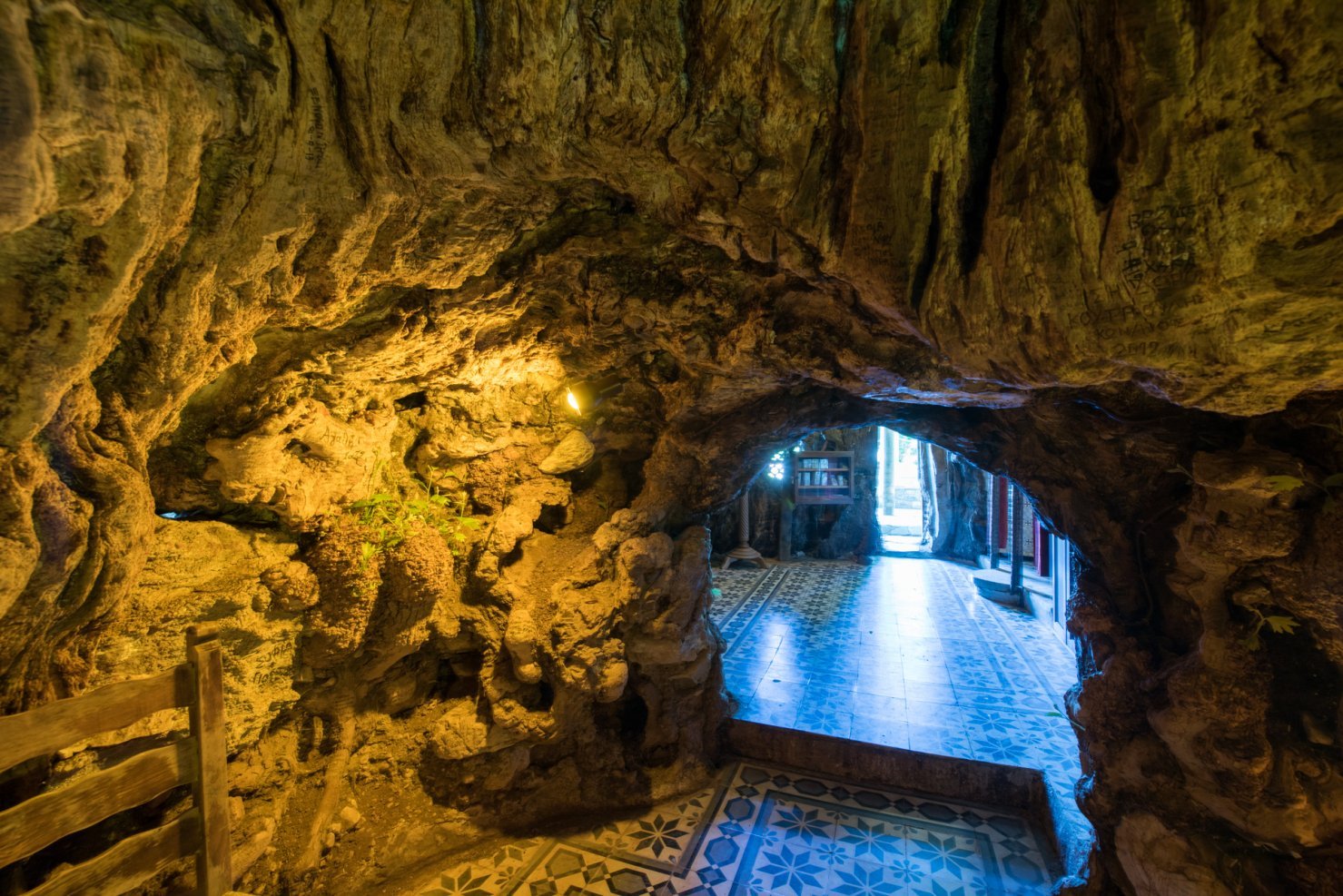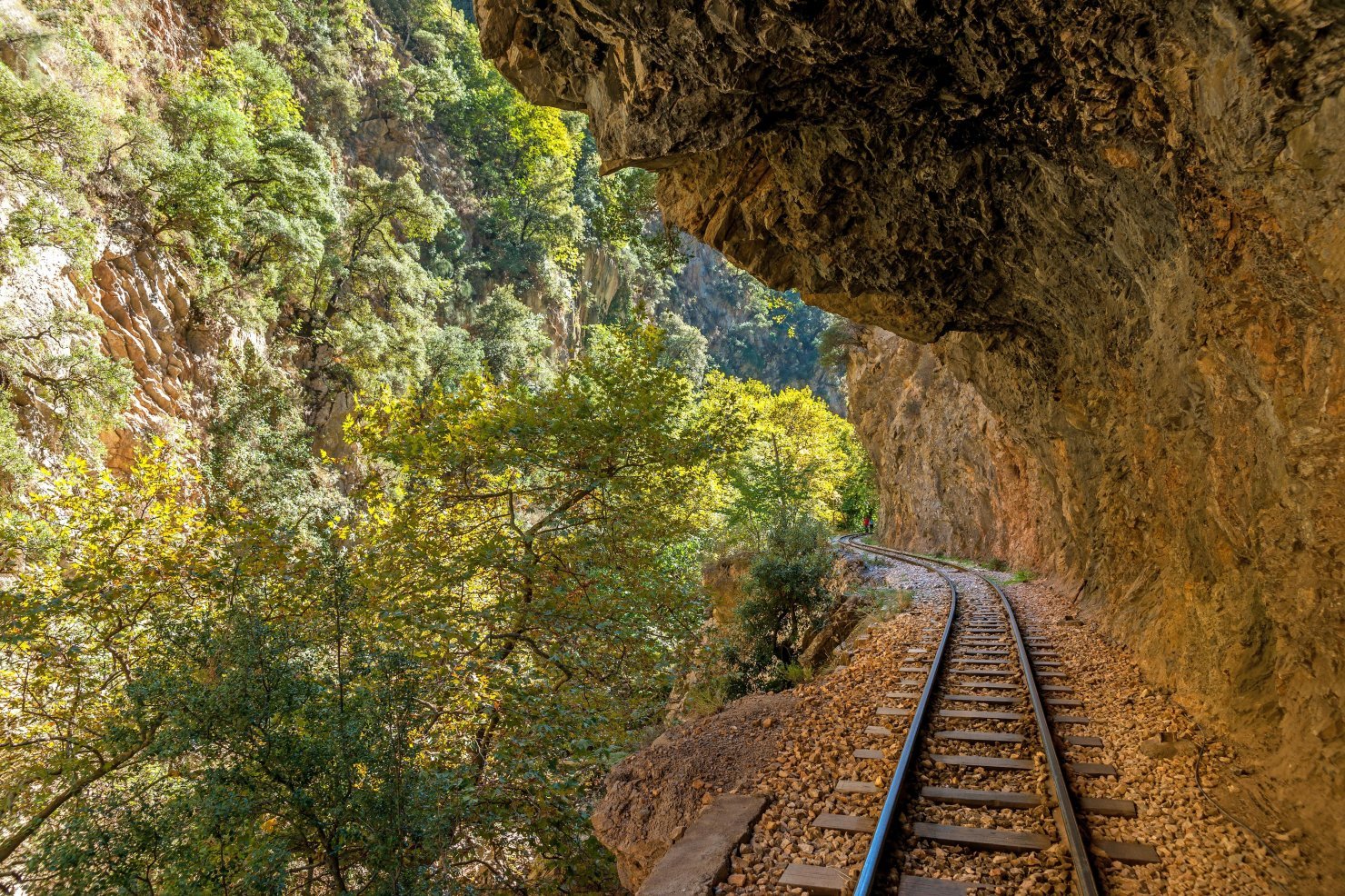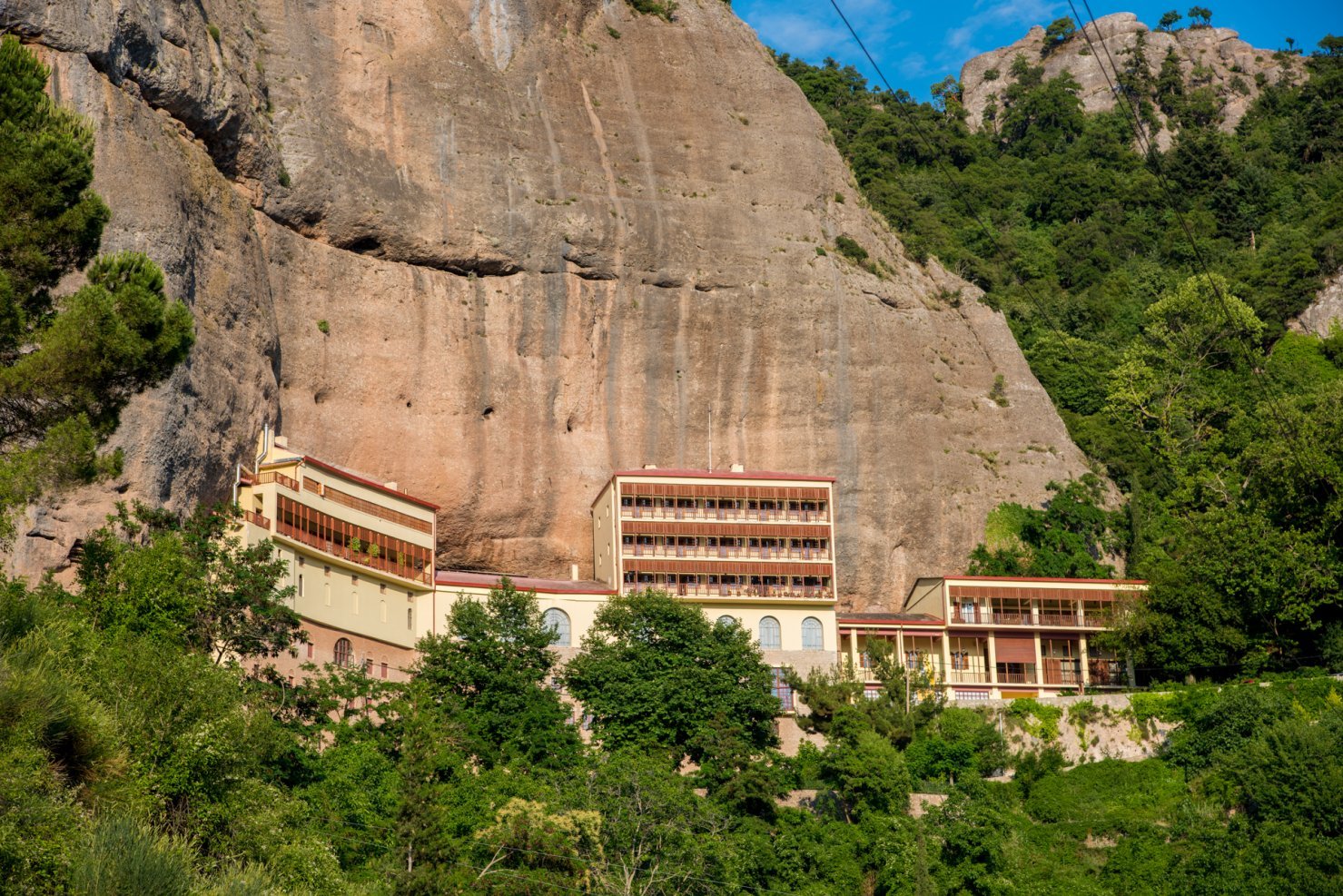The Peloponnesian North in three days and 10 stops
From Corinth to Achaia through beaches, lakes and gorges
The Peloponnesian north is known for its beaches, the families’ favorites that every summer they give a vote of trust to its crystal clear, shallow waters.
It is also known for Corinth and Kalavrita.
Among all these are bigger and smaller, well-kept secrets: Ancient cities, Alp-like lakes, fairytale paths that cross green gorges, historical monasteries and frozen in time villages.
Are you ready to discover them? Then follow us. We start from Kiato.
¦
¦
![]() 13.2 kilometers
13.2 kilometers
![]() 17 minutes of driving
17 minutes of driving
¦
¦
1st stop: Xylokastro
The “green seashore” of our country, as our poet Kostas Kariotakis described it, is a small seaside town of five and a half thousand people, with a beach walkway ideal for your first walk of the day.
In the summer, you are definitely going for a dip at the beach of Pefkia, at the foot of the beautiful pine forest, which is the trade mark of the town.
Among the sights of Xylokastro stand out the church of Agios Vlasios, ornated with works of great hagiographers such as Fotis Kontoglou, Aginor Asteriadis and Spiros Vasileiou, while upon the hill the church of Panagia Korfiotissa also worths a visit, not only for its impressive wooden screen that dates back to the 17th century, but also for its amazing view. We have more about Xylokastro here.
¦
¦
![]() 34.9 kilometers
34.9 kilometers
![]() 37 minutes of driving
37 minutes of driving
¦
¦
2nd stop: Evrostini village
You will find it on the maps as Evrostina too, and you will hear the elderly people here call it Zaholi.
No matter how you like to call it, the only thing that’s certain is that this is a beautiful little village with less than 50 residents, nestled at the 700 meters of the mountain sides of Zireia.
Nature lovers and hikers are excited with the “Creek of Mills”, a natural creek with running waters, small waterfalls, wooden bridges and ducks swimming on its waters. If you’re interested in longer hiking the Plateau of Zaholi starts almost next to the village and it is crossed by winding paths under tuft black pine trees.
In the village’s sights is the church of Agios Georgios with its 17 domes that dates back in the 1811. You will find it right at the entrance of Evrostini.
¦
¦
![]() 40.6 kilometers
40.6 kilometers
![]() 1 hour and 7 minutes of driving
1 hour and 7 minutes of driving
¦
¦
3rd stop: Lake Tsivlou
One of the most famous and most impressive lakes of Peloponnese was not always there.
It was created in 1915, when a big landslide blocked the riverbed of Krathis River and destroyed almost half of Tsivlos village, from which it took its name.
But as they say, everything happens for a reason: Today, Tsivlou Lake is a magical, Alp-like landscape in the heart of Achaia, nestled among green slopes in an altitude of 754 meters.
With a depth of 80 meters, the lake is offered for summer dips, as well as for picnics or strolling at its banks during every season of the year. The little village beside it has as a sight the stone church of Agios Athanasios, a few houses and good options in food.
¦
¦
![]() 12.8 kilometers
12.8 kilometers
![]() 22 minutes of driving
22 minutes of driving
¦
¦
4th stop: Zarouchla
Up there at the 1.020 meters, there is Zarouchla, one of the most mountainous villages of Achaia- and one of the most beautiful too.
Covered in chest nut and fir trees, with the sweet music of Krathis River crossing it everywhere, and with its central cobblestone walkway filled with excellent choices in food and accommodation, Zarouchla is the ideal place for the first night stay of our small trip.
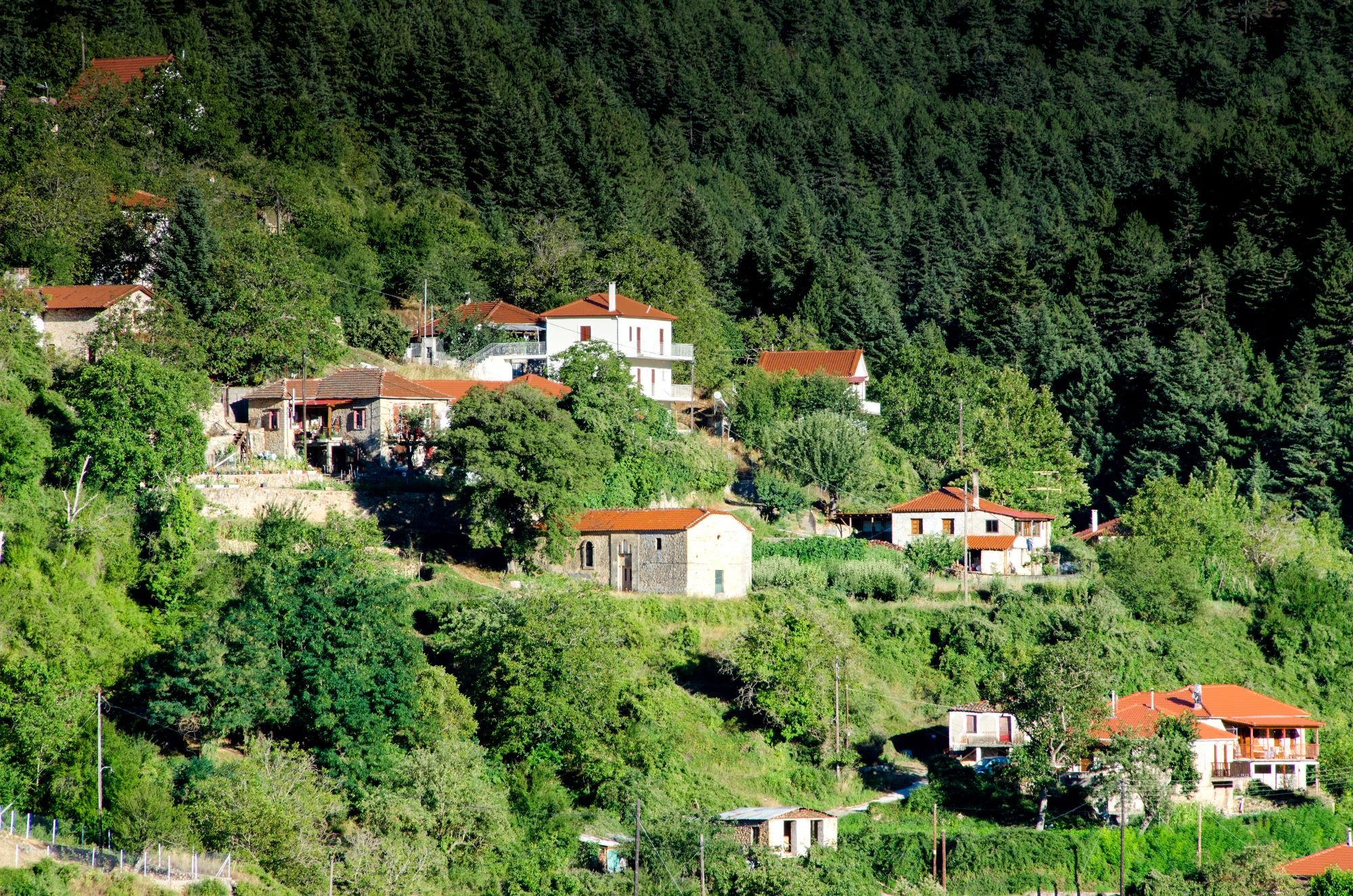
Among its sights are included byzantine churches and historical tower houses of the 17th century, some of which have been restored and operate as guest houses.
The lovers of climbing and the sworn hikers should note down that Zarouchla is the perfect base to start exploring the difficult but magnificent mountainous route that ends up at the Waters of Stygos- it is where Thetis dipped Achilles body apart from the heels that she was holding and made him invulnerable, where these waterfalls still run and you will be tempted to stand under them, since you don’t know what might happen.
You can find more details about climbing there from Peristera village, 7 kilometers away from Zarouchla.
¦
¦
![]() 34 kilometers
34 kilometers
![]() 1 hour of driving
1 hour of driving
¦
¦
5th stop: Kalavrita
One of the most popular destinations of Peloponnese nestles on a green slope of Mt. Chelmos, in an altitude of 750 meters.
The historical Kalavrita is the perfect place for the first coffee of the day at the covered in trees squares, and for endless strolling at their center, among shops selling local, traditional products and sights that include among others the very interesting Municipal Museum of the Kalavritan Holocaust, which is housed at the old elementary school.
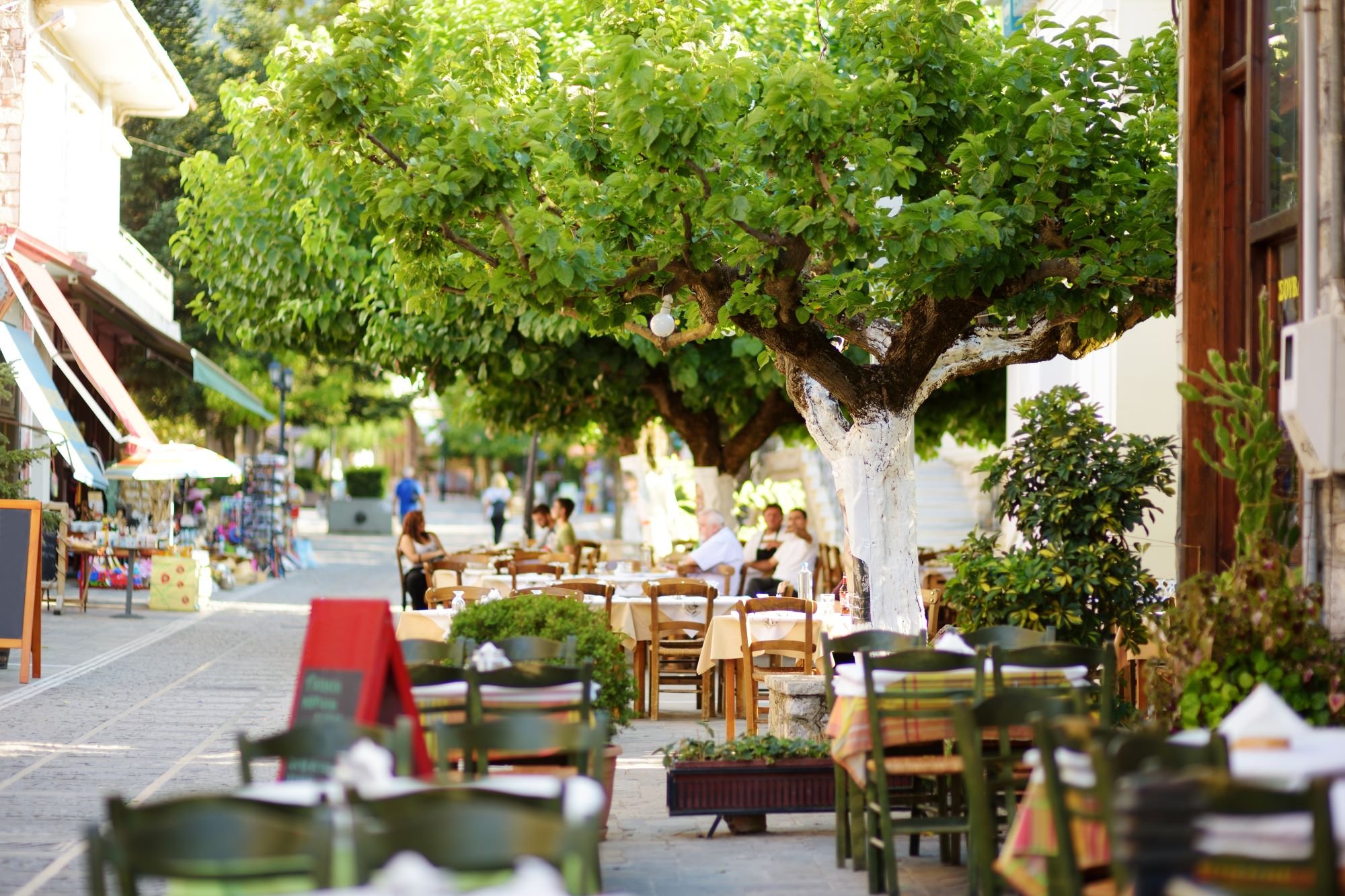
From Kalavrita also starts one of the most beautiful train routes in Greece, the Odontotos rack railway that crosses the Vouraikos Gorge to end up at Diakopto. It won’t come as a surprise if you’d like to spend two hours from our three-day trip at this amazing route. We have more about Kalavrita here.
¦
¦
![]() 5.2 kilometers
5.2 kilometers
![]() 9 minutes of driving
9 minutes of driving
¦
¦
6th stop: Agia Lavra
The legendary banner of the Greek Revolution that was first raised here by the Paleon Patron Germanos monk, is still here and you can see it.
The visitable Monastery of Agia Lavra dates back in the 10th century and it is built upon a beautiful, green spot at the feet of Mt. Velia, where it enjoys an amazing view of the surrounding idyllic landscapes.
Apart from the famous banner, on its relics are included the Epitaph of 1754 embroidered in Izmir, a Gospel donated to the monastery by the Russian Empress Catherine the Great, and the gold- embroidered vestments of Paleon Patron Germanos.
A few meters under the monastery, on the same slope, there is the Memorial park of Kalavrita, with the heartbreaking monument of the Kalavritan Holocaust and the words “no more wars” shaped with big, white pebbles beside it.
¦
¦
![]() 18.5 kilometers
18.5 kilometers
![]() 44 minutes of driving
44 minutes of driving
¦
¦
7th stop: Plataniotissa village
The beautiful, small village of Plataniotisa looks like a postcard as the red tiles of the few houses add red touches on the fully green landscape that surrounds it. However, it can get even more impressive: Here once were growing three plane trees, which over time united in one that today it reaches the 25 meters in height and 16 meters in width.
And even more impressive: Inside the hollow of this gigantic plane tree, which can easily fit 20 people, there is a small church, the famous church of Panagia Plataniotissa, from which the village took its name, as until 1915 it was called Klapatsuna.
¦
¦
![]() 13.7 kilometers
13.7 kilometers
![]() 28 minutes of driving
28 minutes of driving
¦
¦
8th stop: Zachlorou village
In the depths of the gorge that Odontotos rack railway crosses, built upon the waters of the river called Vouraikos, there is Zarochlou, a beautiful village with red tiled roofs popping up among tufted plane trees, apple and walnut trees.
The image is completed by the imposing rocks of the gorge that rise above it and embrace it, creating the feeling of a natural haven. An abundance of guest houses and restaurants make it ideal for our second night stay.
Except for the strolling on its alleyways, with the endless river’s music as a soundtrack, Zarochlou is also offered for exploring a part (as short or as long as you like) of the hiking route that connects Diakopto with Kalavrita, by following the train lines.
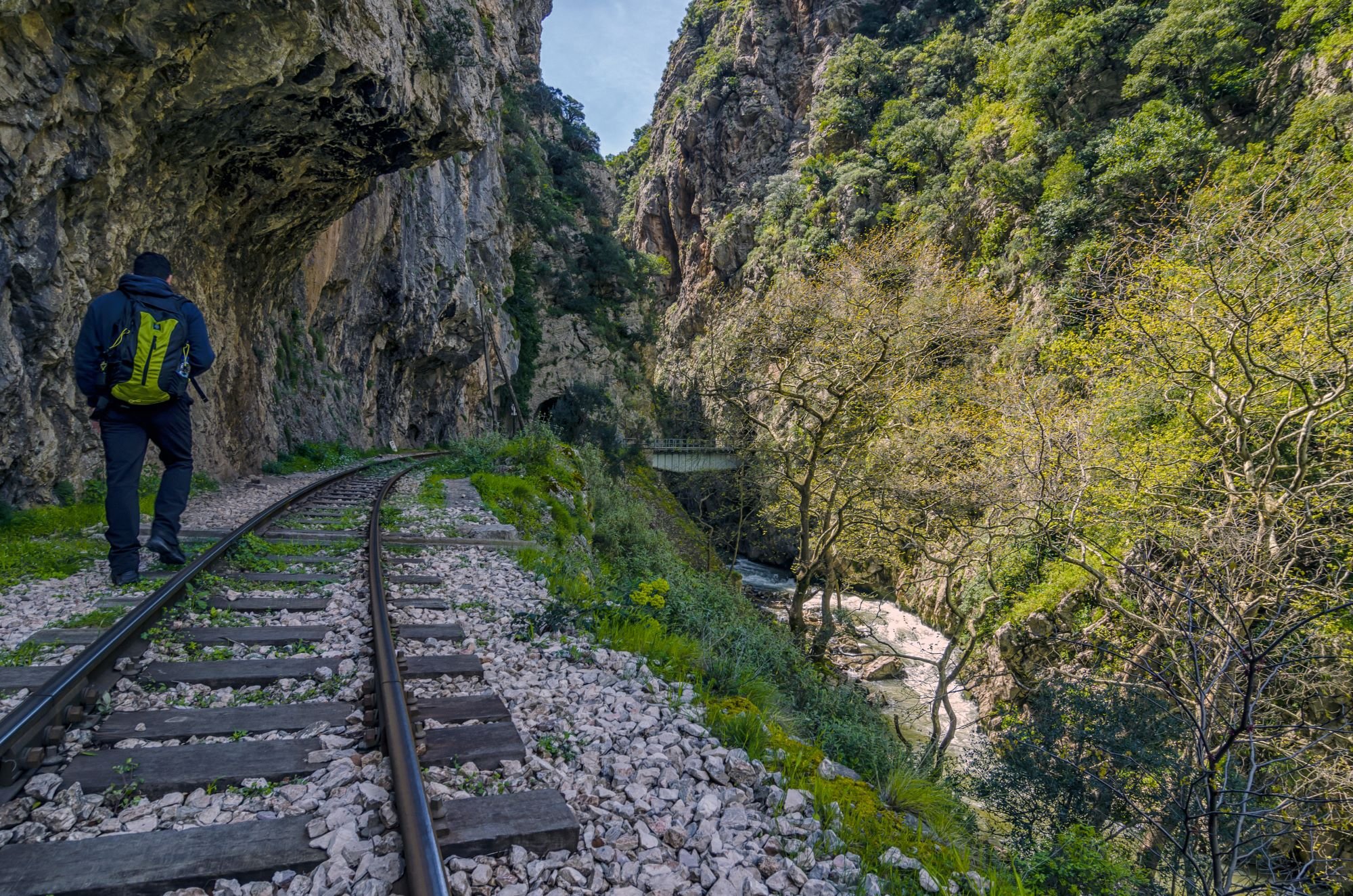
If you do the entire route, it lasts approximately 6 hours.
If you like to do just a part of it, starting from Zarochlou, we would recommend you to move towards Kalavrita, not towards Diakopto, since the path here is closer to the river, passes by the narrower parts of the gorge and crosses amazing landscapes.
¦
¦
![]() 6.5 kilometers
6.5 kilometers
![]() 13 minutes of driving
13 minutes of driving
¦
¦
9th stop: Moni Megalou Spilaiou
Carved in the shadow of an imposing rock that brings in mind the awe you feel at Meteora, Moni Megalou Spilaiou has been here for over 1.500 years since 362 A.C.
It has been burnt down and destroyed many times in its long History, but it has survived till today and is visitable and adorned with 17th century frescoes.
The view from the balancer is amazing, as well as the atmospherically lit interior that constantly reminds you that you are inside a cave- and actually in a big one.
Travel Tips
Vineyard visit
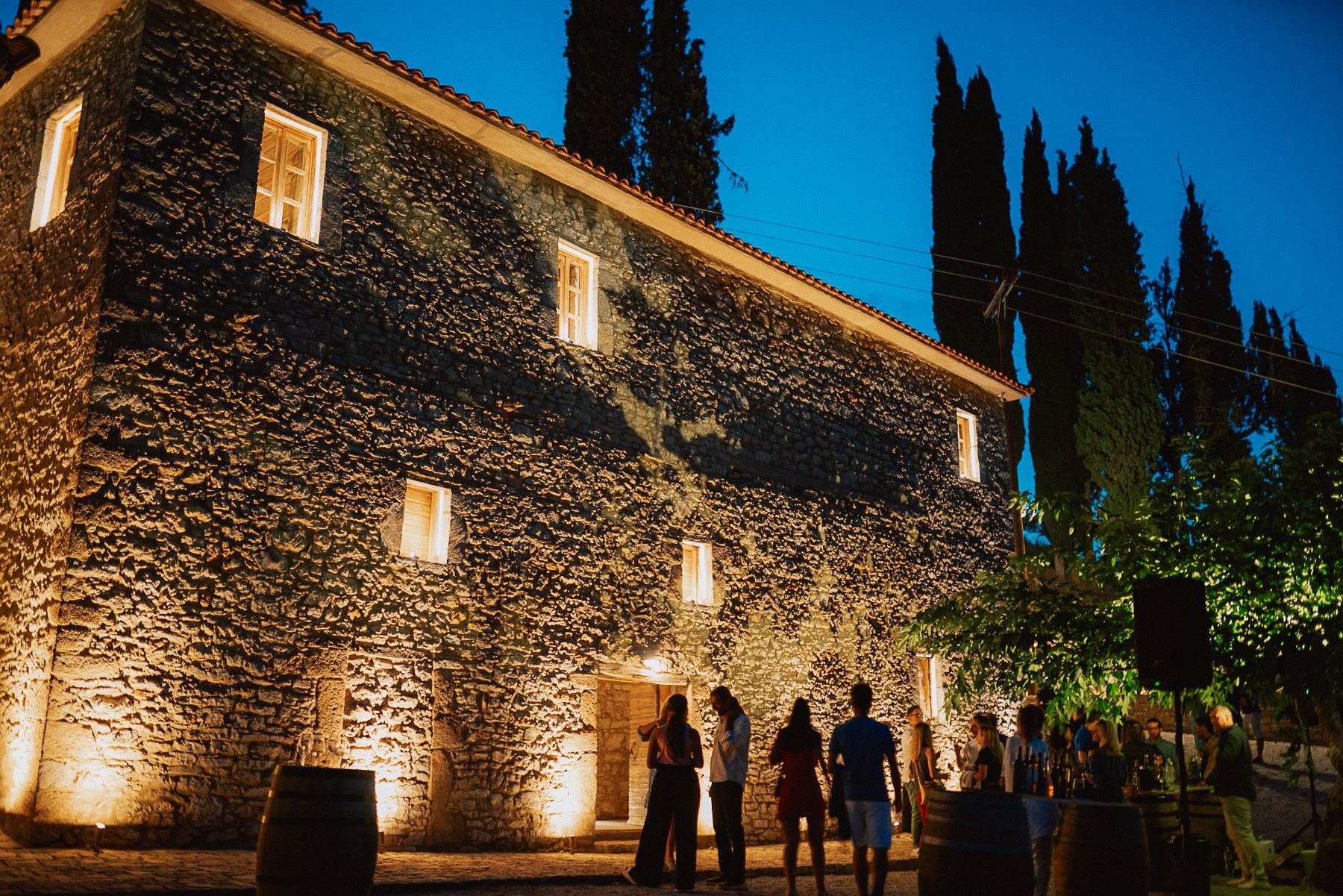
At an altitude of 800 meters above sea level, the visitor has the opportunity to visit the Mega Spileo Estate, exploring its exquisite vineyards. Discover the place of provenance of high quality wines, many of which hold significant recognition and awards. It is essential before leaving this enchanting place, to taste some of these wines!
Mega Spileo Estate ⇒ ⇒ A timeless jewel, a reference point for wine lovers, the Mega Spileo Estate
¦
¦
![]() 27.5 kilometers
27.5 kilometers
![]() 38 minutes of driving
38 minutes of driving
¦
¦
10th stop: Trapeza
We bet that if you don’t have any friends in the region, you won’t have heard about it. And this must change, especially if you’re reading this in summer, since the Trapeza beach, along with its natural extension, Pounta beach, is without a doubt one of the best beaches in the entire Corinthian Gulf.
Its pebbly vastness overlooks a postcard-like sunset, while the green slopes of Prophet Elijah hill behind it create the perfect frame. The village itself offers a panoramic view to the waters of the Corinthian Gul that glisten on the horizon.
Five kilometers away from Trapeza, there is Zachloritika village, another undiscovered village of Aigialeia, which hides a very old secret: Close by, at the banks of Vouraikos there was an oracle, according to Pausanias, inside a cave, where Hercules was worshiped.
The ancient city was called Voura (like Vouraikos, since everything is connected somehow) and we know that it was destroyed by an earthquake in the 4th century B.C. The cave still stands though, on the slope of the mountain- you can find it by following the relevant signs.
All the route along with the stops on the map here : https://tinyurl.com/y4brjyqp
A rare travel and wine experience in the debts of the most historic vineyard in the Peloponnese
An imposing natural landscape that culminates in a unique Greek terroir. A journey with many wonderful destinations blessed by the Great Vine.
A place that carries centuries of history and constantly gives birth to new travel and wine experiences. The opportunities to find yourself again in Northern Peloponnese increase throughout the year.

3-5 days trip


